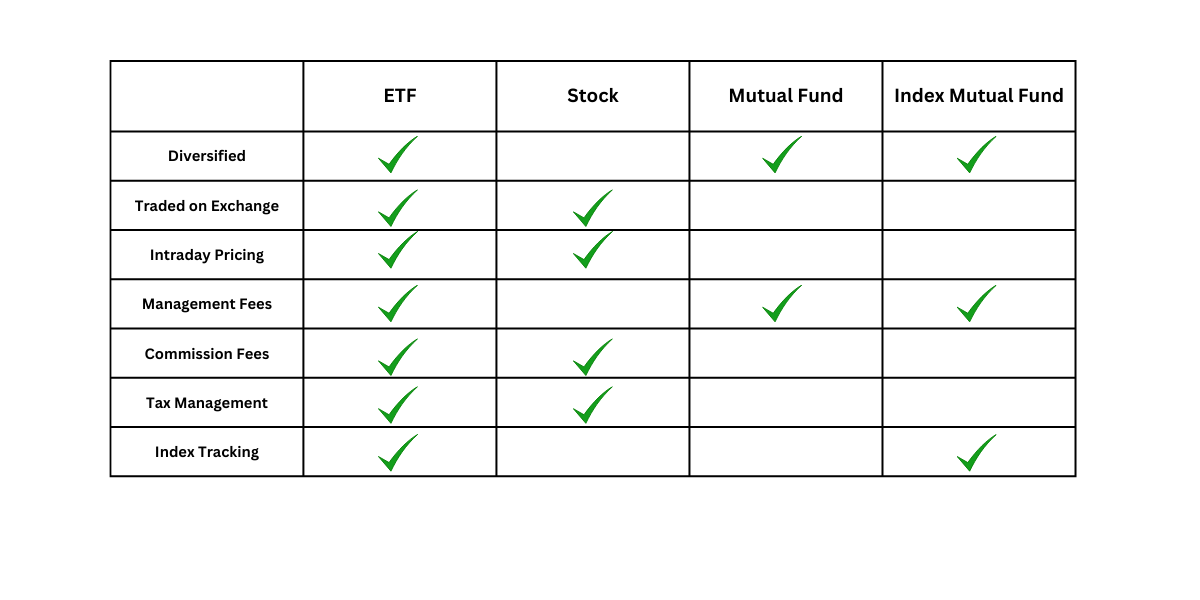Unveiling the Meteoric Rise: How Exchange-Traded Funds (ETFs) Are Powering Growth and Sustainability in 2024
In recent years, exchange-traded funds (ETFs) have witnessed an unprecedented surge in popularity among investors. These diversified, low-cost investment options have come a long way since their inception and are now ubiquitous on major stock markets globally.

In recent years, exchange-traded funds (ETFs) have witnessed an unprecedented surge in popularity among investors. These diversified, low-cost investment options have come a long way since their inception and are now ubiquitous on major stock markets globally. In this blog post, we'll delve into the factors contributing to the rise in ETFs, their advantages, and what this trend means for the investment landscape with the recent approval of Bitcoin-based ETFs for trading in the U.S. by the Securities and Exchange Commission.
The Historical Context
Launched in the early 1990s, the first ETFs were designed to track specific market indices, providing investors with a cost-effective alternative to mutual funds. The rise of the ETF industry can be attributed to several converging trends, including increased investor appetite for passively managed funds, technological advancements, and recent regulatory changes. With their recent approval by U.S. regulators and surge in trading for Bitcoin-based ETFs on popular exchanges starting with the $4 billion that changed hands on their first day of trading, ETFs are an investment product that's poised to make investing in a diversified portfolio easier, more personalized, and transparent.
- Shift towards Passive Investing
As more investors have realized the potential for underperformance in actively managed funds, especially given their additional management and administration fees, they have increasingly opted for more affordable, passively managed investment options like ETFs. These products focus on tracking indexes rather than trying to outperform them, resulting in lower fees and more consistent returns.
- Technological Advancements
Technology has played a significant role in the growth of ETFs. Rapid advancements in trading and communication platforms have enabled investors to access ETFs easily and trade them on major stock exchanges just like individual stocks.
- Evolving Regulatory Landscape
Regulatory changes worldwide have allowed for the proliferation of ETFs and fostered innovation within the industry. More recently, regulatory bodies have approved various thematic and environmentally focused ETFs, further expanding investors' options.
Key Advantages
The rising popularity of ETFs is driven by several key advantages over traditional investment vehicles:
- Diversification
ETFs inherently provide diverse exposure to a wide range of assets, such as stocks, bonds, commodities, and real estate — all within a single investment product. This diversification can help to reduce the risk associated with investing in individual securities.
- Lower Cost
Due to their passively managed nature, ETFs are known for their cost efficiency. They typically have lower expense ratios than their actively managed counterparts, allowing investors to keep more of their returns.
- Liquidity
Since ETFs trade on stock exchanges throughout the trading day, they offer greater liquidity compared to mutual funds that are only priced and traded once a day after market close. This access to real-time prices allows investors to capitalize on market fluctuations.
- Transparency
ETFs generally disclose their holdings daily, offering a high degree of transparency. This enables investors to have a clear understanding of the assets they hold, empowering them to make informed investment decisions.
ETFs versus Mutual Funds

Future Implications
As ETFs continue to grow in popularity, we may witness a few notable changes in the investment landscape:
- Increased Competition and Innovation
ETF providers are compelled to develop innovative products to stand out in an increasingly crowded marketplace. This could result in unique, targeted investment strategies and broader thematic ETFs. Companies like BlackRock and their iShares EFT products and Fidelity are leading the way to bring ETFs to the mainstream.
- Investing in the Future Trends: Integration of ESG Factors
ETFs make it easy for companies and individuals to invest in underlying assets that look to future trends such as the growing awareness of environmental, social, and governance (ESG) issues and the desire among investors to align their investments with their ethical beliefs and values. BlackRock offers a diverse array of ETFs tied to such global megatrends as technology innovation, demographics, urbanization, climate change, and global wealth. In turn, ETFs provide a way for companies and NGOs that are looking for sources of capital to help solve the world's problems to more easily access it.
- Personalization of ETF Investing
If investing in megatrends isn't enough, fintech-based companies will be able to create personalized ETF portfolios tailored to specific investor risks, preferences, and financial goals, thereby enhancing the investment experience.
Conclusion
The rise of ETFs signifies a shift in the investment landscape powered by the digital transformation of the industry and driven by investors' natural inclination to reduce risk through diversification while seeking greater cost efficiency, liquidity, and transparency. As the market evolves and new fintech-based investment products emerge, ETFs are likely to shift from the new and exotic class of investment vehicle and enter the cultural mainstream.
